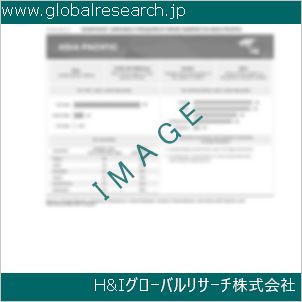Table of Contents
1 Industry Overview of Potassium
1.1 Definition and Specifications of Potassium
1.1.1 Definition of Potassium
1.1.2 Specifications of Potassium
1.2 Classification of Potassium
1.3 Applications of Potassium
1.3.1 Nuclear Application
1.3.2 Non-Nuclear Application
1.4 Industry Chain Structure of Potassium
1.5 Industry Overview and Major Regions Status of Potassium
1.5.1 Industry Overview of Potassium
1.5.2 Global Major Regions Status of Potassium
1.6 Industry Policy Analysis of Potassium
1.7 Industry News Analysis of Potassium
2 Manufacturing Cost Structure Analysis of Potassium
2.1 Raw Material Suppliers and Price Analysis of Potassium
2.2 Equipment Suppliers and Price Analysis of Potassium
2.3 Labor Cost Analysis of Potassium
2.4 Other Costs Analysis of Potassium
2.5 Manufacturing Cost Structure Analysis of Potassium
2.6 Manufacturing Process Analysis of Potassium
3 Technical Data and Manufacturing Plants Analysis of Potassium
3.1 Capacity and Commercial Production Date of Global Potassium Major Manufacturers in 2023
3.2 Manufacturing Plants Distribution of Global Potassium Major Manufacturers in 2023
3.3 R&D Status and Technology Source of Global Potassium Major Manufacturers in 2023
3.4 Raw Materials Sources Analysis of Global Potassium Major Manufacturers in 2023
4 Capacity, Production and Revenue Analysis of Potassium by Regions, Types and Manufacturers
4.1 Global Capacity, Production and Revenue of Potassium by Regions 2019-2024
4.2 Global and Major Regions Capacity, Production, Revenue and Growth Rate of Potassium 2019-2024
4.3 Global Capacity, Production and Revenue of Potassium by Types 2019-2024
4.4 Global Capacity, Production and Revenue of Potassium by Manufacturers 2019-2024
5 Price, Cost, Gross and Gross Margin Analysis of Potassium by Regions, Types and Manufacturers
5.1 Price, Cost, Gross and Gross Margin Analysis of Potassium by Regions 2019-2024
5.2 Price, Cost, Gross and Gross Margin Analysis of Potassium by Types 2019-2024
5.3 Price, Cost, Gross and Gross Margin Analysis of Potassium by Manufacturers 2019-2024
6 Consumption Volume, Consumption Value and Sale Price Analysis of Potassium by Regions, Types and Applications
6.1 Global Consumption Volume and Consumption Value of Potassium by Regions 2019-2024
6.2 Global and Major Regions Consumption Volume, Consumption Value and Growth Rate of Potassium 2019-2024
6.3 Global Consumption Volume and Consumption Value of Potassium by Types 2019-2024
6.4 Global Consumption Volume and Consumption Value of Potassium by Applications 2019-2024
6.5 Sale Price of Potassium by Regions 2019-2024
6.6 Sale Price of Potassium by Types 2019-2024
6.7 Sale Price of Potassium by Applications 2019-2024
6.8 Market Share Analysis of Potassium by Different Sale Price Levels
7 Supply, Import, Export and Consumption Analysis of Potassium
7.1 Supply, Consumption and Gap of Potassium 2019-2024
7.2 Global Capacity, Production, Price, Cost, Revenue, Supply, Import, Export and Consumption of Potassium 2019-2024
7.3 USA Capacity, Production, Price, Cost, Revenue, Supply, Import, Export and Consumption of Potassium 2019-2024
7.4 EU Capacity, Production, Price, Cost, Revenue, Supply, Import, Export and Consumption of Potassium 2019-2024
7.5 China Capacity, Production, Price, Cost, Revenue, Supply, Import, Export and Consumption of Potassium 2019-2024
7.6 Japan Capacity, Production, Price, Cost, Revenue, Supply, Import, Export and Consumption of Potassium 2019-2024
8 Major Manufacturers Analysis of Potassium
8.1 Manufacturer One
8.1.1 Company Profile
8.1.2 Product Picture and Specifications
8.1.2.1 Type I
8.1.2.2 Type II
8.1.2.3 Type III
8.1.3 Capacity, Production, Price, Cost, Gross and Revenue
8.1.4 Contact Information
8.2 Manufacturer Two
8.2.1 Company Profile
8.2.2 Product Picture and Specifications
8.2.2.1 Type I
8.2.2.2 Type II
8.2.2.3 Type III
8.2.3 Capacity, Production, Price, Cost, Gross and Revenue
8.2.4 Contact Information
8.3 Manufacturer Three
8.3.1 Company Profile
8.3.2 Product Picture and Specifications
8.3.2.1 Type I
8.3.2.2 Type II
8.3.2.3 Type III
8.3.3 Capacity, Production, Price, Cost, Gross and Revenue
8.3.4 Contact Information
8.4 Manufacturer Four
8.4.1 Company Profile
8.4.2 Product Picture and Specifications
8.4.2.1 Type I
8.4.2.2 Type II
8.4.2.3 Type III
8.4.3 Capacity, Production, Price, Cost, Gross and Revenue
8.4.4 Contact Information
8.5 Manufacturer Five
8.5.1 Company Profile
8.5.2 Product Picture and Specifications
8.5.2.1 Type I
8.5.2.2 Type II
8.5.2.3 Type III
8.5.3 Capacity, Production, Price, Cost, Gross and Revenue
8.5.4 Contact Information
…
9 Marketing Trader or Distributor Analysis of Potassium
9.1 Marketing Channels Status of Potassium
9.2 Traders or Distributors with Contact Information of Potassium by Regions
9.3 Ex-work Price, Channel Price and End Buyer Price Analysis of Potassium
9.4 Regional Import, Export and Trade Analysis of Potassium
10 Industry Chain Analysis of Potassium
10.1 Upstream Major Raw Materials Suppliers Analysis of Potassium
10.1.1 Major Raw Materials Suppliers with Contact Information Analysis of Potassium
10.1.2 Major Raw Materials Suppliers with Supply Volume Analysis of Potassium by Regions
10.2 Upstream Major Equipment Suppliers Analysis of Potassium
10.2.1 Major Equipment Suppliers with Contact Information Analysis of Potassium
10.2.2 Major Equipment Suppliers with Product Pictures Analysis of Potassium by Regions
10.3 Downstream Major Consumers Analysis of Potassium
10.3.1 Major Consumers with Contact Information Analysis of Potassium
10.3.2 Major Consumers with Consumption Volume Analysis of Potassium by Regions
10.4 Supply Chain Relationship Analysis of Potassium
11 Development Trend of Analysis of Potassium
11.1 Capacity, Production and Revenue Forecast of Potassium by Regions and Types
11.1.1 Global Capacity, Production and Revenue of Potassium by Regions 2024-2029
11.1.2 Global and Major Regions Capacity, Production, Revenue and Growth Rate of Potassium 2024-2029
11.1.3 Global Capacity, Production and Revenue of Potassium by Types 2024-2029
11.2 Consumption Volume and Consumption Value Forecast of Potassium by Regions, Types and Applications
11.2.1 Global Consumption Volume and Consumption Value of Potassium by Regions 2024-2029
11.2.2 Global and Major Regions Consumption Volume, Consumption Value and Growth Rate of Potassium 2024-2029
11.2.3 Global Consumption Volume and Consumption Value of Potassium by Types 2024-2029
11.2.4 Global Consumption Volume and Consumption Value of Potassium by Applications 2024-2029
11.3 Supply, Import, Export and Consumption Forecast of Potassium
11.3.1 Supply, Consumption and Gap of Potassium 2024-2029
11.3.2 Global Capacity, Production, Price, Cost, Revenue, Supply, Import, Export and Consumption of Potassium 2024-2029
11.3.3 USA Capacity, Production, Price, Cost, Revenue, Supply, Import, Export and Consumption of Potassium 2024-2029
11.3.4 EU Capacity, Production, Price, Cost, Revenue, Supply, Import, Export and Consumption of Potassium 2024-2029
11.3.5 China Capacity, Production, Price, Cost, Revenue, Supply, Import, Export and Consumption of Potassium 2024-2029
11.3.6 Japan Capacity, Production, Price, Cost, Revenue, Supply, Import, Export and Consumption of Potassium 2024-2029
12 New Project Investment Feasibility Analysis of Potassium
12.1 New Project SWOT Analysis of Potassium
12.2 New Project Investment Feasibility Analysis of Potassium
13 Conclusion of the Global Potassium (CAS 7440-09-7) Industry 2024 Market Research Report
| ※参考情報 カリウム(Potassium、化学式: K、CAS番号: 7440-09-7)は、周期表の第一族に属するアルカリ金属の一つです。これは、元素として非常に軽く、反応性が高い金属です。その特性や用途、本質について詳しく説明します。 カリウムは、自然界に存在する主要な元素の一つであり、主に塩に形態で見られます。特に、カリウム塩は、鉱石や海水に豊富に存在し、工業的に抽出される際には、重要な原料となります。カリウムは、金属状態での性質はもちろんのこと、化合物としても非常に重要な役割を果たしています。 カリウムの基本的な特性として、まず非常に低い密度と融点があります。これにより、常温では非常に柔らかく、ナイフなどで簡単に切ることができます。また、空気中の酸素や水分と激しく反応するため、通常は保存される際には油などの不活性な物質中に保存されます。カリウムは、化学的に非常に反応性が高く、特に水と反応すると水素を発生し、火が生じることがあります。このため、取り扱う際には特に注意が必要です。 カリウムにはさまざまな種類の化合物が存在し、その中でも特に重要なのがカリウム塩です。カリウムの最も一般的な化合物には、塩化カリウム(KCl)、硝酸カリウム(KNO3)、硫酸カリウム(K2SO4)などがあります。これらの化合物は、主に肥料や食品添加物、化学工業の中間体として利用されます。 カリウムは植物にとっても重要な栄養素であり、肥料の成分として広く利用されています。特に、カリウムは植物の成長を促進し、病害抵抗力を高める働きがあることから、農業において非常に需要が高い元素です。カリウムを含む肥料は、作物の収穫量を増加させ、品質も向上させるために使用されます。 また、カリウムは生物の体内でも重要な役割を果たしています。例えば、人間の体内では、神経の働きを助け、筋肉の収縮を調整することに寄与しています。カリウムの摂取不足は、筋肉のけいれんや不整脈の原因となることがありますので、日常的な栄養管理が重要です。 カリウムの用途は多岐にわたります。工業的には、化学反応における触媒や還元剤として使われるほか、電池材料や保護ガスとしても利用されています。特にリチウムイオン電池の研究においては、カリウムイオン電池が注目されており、次世代のエネルギー貯蔵システムとしての可能性が模索されています。 さらに、カリウムは医療分野でも広く利用されています。カリウムの補充療法や、カリウムを含む医薬品が数多く存在し、高血圧の管理や心血管疾患の予防に役立っています。カリウムの正しい摂取は健康維持に不可欠であり、特に高齢者や特定の疾患を抱える患者にとっては重要な栄養素となります。 カリウムに関連する技術も増えてきており、特に環境技術や資源循環の分野での研究が進んでいます。廃水処理や土壌改善などの分野において、カリウムを効果的に利用する方法が求められています。再生可能エネルギーの分野でも、カリウムの利用価値は高まっており、持続可能な社会の実現に向けた鍵の一つとされています。 総じて、カリウムはその多様な特性と用途から、現代社会において重要な役割を果たしている元素であると言えます。栄養学、農業、工業、医療といった幅広い分野での応用が期待されており、今後もその研究と利用の可能性は広がることでしょう。カリウムを理解し、その特性を生かすことは、私たちの生活をより良くするために欠かせない要素となっています。 |
❖ 免責事項 ❖
http://www.globalresearch.jp/disclaimer












